-
 Firefighter Health: A Narrative Review of Occupational Threats and Countermeasures
Firefighter Health: A Narrative Review of Occupational Threats and Countermeasures -
 Identifying and Evaluating Young Children with Developmental Central Hypotonia: An Overview of Systematic Reviews and Tools
Identifying and Evaluating Young Children with Developmental Central Hypotonia: An Overview of Systematic Reviews and Tools -
 Investigating the Health Implications of Whey Protein Consumption: A Narrative Review of Risks, Adverse Effects, and Associated Health Issues
Investigating the Health Implications of Whey Protein Consumption: A Narrative Review of Risks, Adverse Effects, and Associated Health Issues -
 Relationship between Solitary Masturbation and Sexual Satisfaction: A Systematic Review
Relationship between Solitary Masturbation and Sexual Satisfaction: A Systematic Review
Journal Description
Healthcare
Healthcare
is an international, scientific, peer-reviewed, open access journal on health care systems, industry, technology, policy, and regulation, and is published semimonthly online by MDPI. Ocular Wellness & Nutrition Society (OWNS) is affiliated with Healthcare and its members receive discounts on article processing charges.
- Open Access— free for readers, with article processing charges (APC) paid by authors or their institutions.
- High Visibility: indexed within Scopus, SCIE and SSCI (Web of Science), PubMed, PMC, and other databases.
- Journal Rank: JCR - Q2 (Health Policy & Services ) / CiteScore - Q2 (Leadership and Management)
- Rapid Publication: manuscripts are peer-reviewed and a first decision is provided to authors approximately 19.5 days after submission; acceptance to publication is undertaken in 2.4 days (median values for papers published in this journal in the second half of 2023).
- Recognition of Reviewers: reviewers who provide timely, thorough peer-review reports receive vouchers entitling them to a discount on the APC of their next publication in any MDPI journal, in appreciation of the work done.
- Companion journals for Healthcare include: Trauma Care and European Burn Journal.
Impact Factor:
2.8 (2022);
5-Year Impact Factor:
3.0 (2022)
Latest Articles
General, Vaccination, Navigational and Digital Health Literacy of Students Enrolled in Different Medical and Health Educational Programs
Healthcare 2024, 12(9), 907; https://doi.org/10.3390/healthcare12090907 (registering DOI) - 26 Apr 2024
Abstract
Evaluating prospective graduates’ health literacy profiles before they enter the job market is crucial. Our research aimed to explore the health literacy levels of medical and health students by assessing their ability to obtain health-related information, understand healthcare systems, use e-health, and be
[...] Read more.
Evaluating prospective graduates’ health literacy profiles before they enter the job market is crucial. Our research aimed to explore the health literacy levels of medical and health students by assessing their ability to obtain health-related information, understand healthcare systems, use e-health, and be informed about vaccination as well as to explore the factors associated with health literacy. Short versions of the HLS19-Q12 were used for a cross-sectional survey that was carried out among 1042 students enrolled in various medical and health educational programs at three medical universities in Kazakhstan between September and November of 2023. Additionally, instruments such as Digital Health Literacy (HLS19-DIGI), Navigational Health Literacy (HLS19-NAV), and Vaccination Health Literacy (HLS19-VAC) were employed. The score of General Health Literacy was 88.26 ± 17.5. One in eight students encountered difficulties in Vaccination Health Literacy. Despite overall high health literacy, Navigational Health Literacy posed challenges for all students. The Public Health students exhibited the highest General Health Literacy (91.53 ± 13.22), followed by students in Nursing, General Medicine, other educational programs (Dentistry and Biomedicine) and Pharmacy. Financial constraints for medication and medical examinations significantly influenced health literacy across all types of individuals. Since comprehensive health literacy instruction or interventions are still uncommon in the curricula, it seems reasonable to develop and incorporate appropriate courses for medical and health educational programs.
Full article
Open AccessArticle
Factors Associated with Evidence-Based Practice Competencies among Taiwanese Nurses: A Cross-Sectional Study
by
Li-Chuan Cheng, Chia-Jung Chen, Shih-Chun Lin and Malcolm Koo
Healthcare 2024, 12(9), 906; https://doi.org/10.3390/healthcare12090906 (registering DOI) - 26 Apr 2024
Abstract
Evidence-based practice (EBP) is an essential component of healthcare practice that ensures the delivery of high-quality care by integrating the best available evidence. This study aimed to explore factors influencing EBP among nursing professionals in Taiwan. A cross-sectional survey study was conducted with
[...] Read more.
Evidence-based practice (EBP) is an essential component of healthcare practice that ensures the delivery of high-quality care by integrating the best available evidence. This study aimed to explore factors influencing EBP among nursing professionals in Taiwan. A cross-sectional survey study was conducted with 752 registered nurses and nurse practitioners recruited from a regional teaching hospital in southern Taiwan. EBP competency was evaluated using the Taipei Evidence-Based Practice Questionnaire (TEBPQ). The results showed that participation in evidence-based courses or training within the past year had the strongest association with EBP competencies (Std. B = 0.157, p < 0.001). Holding a graduate degree (Std. B = 0.151, p < 0.001), working in gynecology or pediatrics (Std. B = 0.126, p < 0.001), searching the literature in electronic databases (Std. B = 0.072, p = 0.039), and able to read academic articles in English (Std. B = 0.088, p = 0.005) were significantly associated with higher TEBPQ scores. Younger age (Std. B = −0.105, p = 0.005) and male gender (Std. B = 0.089, p = 0.010) were also identified as factors contributing to higher EBP competencies. The study highlights the importance of ongoing professional development, including EBP training and language proficiency, in enhancing EBP competencies among nursing professionals in Taiwan.
Full article
(This article belongs to the Special Issue Research, Education, Workforce, and Regulation to Transforming Nursing Practice and Leadership: The Future of Nursing)
Open AccessArticle
Assessing the Knowledge of HPV-Associated Oropharyngeal Squamous Cell Carcinoma, HPV Vaccination, and Practice Scope among Saudi Dental Students in the Western Region
by
Maha T. Alsharif and Elham Alsahafi
Healthcare 2024, 12(9), 905; https://doi.org/10.3390/healthcare12090905 (registering DOI) - 26 Apr 2024
Abstract
(1) Background: Human papillomavirus (HPV) infection is significantly associated with oropharyngeal squamous cell carcinoma (HPV-OPSCC), which is one of the fastest-growing cancer incidences globally. Dental practitioners play a crucial role in the primary and secondary prevention of HPV-OPSCC. There is little known about
[...] Read more.
(1) Background: Human papillomavirus (HPV) infection is significantly associated with oropharyngeal squamous cell carcinoma (HPV-OPSCC), which is one of the fastest-growing cancer incidences globally. Dental practitioners play a crucial role in the primary and secondary prevention of HPV-OPSCC. There is little known about dental students’ awareness regarding HPV-OPSCC and HPV vaccination, as well as their intention to promote ‘primordial prevention’ among their patients. HPV vaccine, and the extent of their professional responsibilities. (2) Methods: This cross-sectional study was conducted in the western region of Saudi Arabia and involved undergraduate dental students (n = 688) from six public and private dental schools. Participants were requested to complete a sequential-section anonymous online survey, with 257 successfully completing all sections of the questionnaire. The association between participant characteristics and HPV-OPSCC, HPV vaccination awareness ratings, and perceived engagement in prevention were analyzed using ANOVA and chi-squared testing. A binary logistic regression analysis was conducted to examine the variables linked to these outcomes. (3) Results: Generally, the overall level of awareness of HPV-OPSCC and HPV vaccination was acceptable, with an average score of 53.44 ± 29.3 out of 100. However, a significant knowledge gap was observed, with 53% of respondents being unaware of the common sites for HPV-OPSCC and 63.8% being uninformed of the appropriate age for HPV vaccination. Females and those with a prior history of sexually transmitted diseases (STDs) had considerably higher levels of HPV vaccination knowledge (p < 0.05). The participants showed a favorable attitude towards their responsibility of informing patients about HPV-OPSCC and advocating HPV immunization. (4) Conclusions: This study underscores the need to enhance dental students’ understanding of HPV-OPSCC and HPV immunization, enabling them to effectively engage in primary and secondary preventative efforts against HPV-OPSCC.
Full article
(This article belongs to the Section Preventive Medicine)
Open AccessArticle
Institutional Surgical Setting and Volume Effects of Certified Arthroplasty Centers in Germany: Evaluation of the Quality of Care in a 5-Year Comparison
by
Katrin Osmanski-Zenk, Annett Klinder, Andreas Pingsmann, Christoph H. Lohmann, Hermann Josef Bail, Bernd Kladny and Wolfram Mittelmeier
Healthcare 2024, 12(9), 904; https://doi.org/10.3390/healthcare12090904 (registering DOI) - 26 Apr 2024
Abstract
To improve arthroplasty care quality, the EndoCert initiative focuses on structural, processual, and surgeon-related quality assurance. The aim of this study was to assess the impact of a surgeon’s case load in certified centers on quality of care, distinguished by different types of
[...] Read more.
To improve arthroplasty care quality, the EndoCert initiative focuses on structural, processual, and surgeon-related quality assurance. The aim of this study was to assess the impact of a surgeon’s case load in certified centers on quality of care, distinguished by different types of surgeons. Data from the annual reports of EndoCert certified centers for the years 2017 to 2021 were analyzed. The study revealed reduced numbers of cases, while the number of surgeons remained constant. Since 2020, the decrease in the average case load per surgeons has become more pronounced. There were also differences between senior (sECrs) and EndoCert-registered surgeons (ECrs). Before the 2020 pandemic, over half of surgeons exceeded minimum annual case requirements, while, afterwards, this number declined, especially for the ECrs. Affiliated surgeons, who are also sECrs or ECrs, performed predominantly lower numbers of arthroplasties. However, a higher percentage of affiliated surgeons in a center correlated with faster surgeries and lower mortality rates. High numbers of arthroplasties per center or surgeon were not necessarily associated with better quality indicators, especially in the knee. While the comprehensive quality standards may offset volume effects, EndoCert should reconsider minimum volume regulations based on surgeon, but also on each joint.
Full article
Open AccessSystematic Review
Korean Hospital Nurses’ Experiences with COVID-19: A Meta-Synthesis of Qualitative Findings
by
Suk-Jung Han, Hee-Jung Hong and Bok-Soon Shin
Healthcare 2024, 12(9), 903; https://doi.org/10.3390/healthcare12090903 (registering DOI) - 26 Apr 2024
Abstract
During the COVID-19 pandemic, hospital nurses in South Korea cared for patients amid their own anxiety and fear of infection, armed with a sense of professional duty and overcoming all odds to end the country’s infectious disease pandemic. This study aims to provide
[...] Read more.
During the COVID-19 pandemic, hospital nurses in South Korea cared for patients amid their own anxiety and fear of infection, armed with a sense of professional duty and overcoming all odds to end the country’s infectious disease pandemic. This study aims to provide a meta-synthesis of qualitative studies examining the perceptions and experiences of nurses who cared for patients in dedicated COVID-19 hospitals in South Korea. Electronic databases, including RISS, KISS, KMbase, NDSL, KoreaMed, DBpia, PubMed, CINAHL, and Cochrane, were searched for research published until 2023. The study included research using qualitative approaches. These were reviewed and analyzed using a thematic synthesis approach. The quality of the studies was ascertained using the Critical Appraisal Skills Program checklist for qualitative research. Ultimately, 13 studies involving 219 nurses were included in the final review. Six major themes and thirteen subthemes emerged. The six topics are: “The crisis of a pandemic that suddenly appeared”, “Challenges in nursing patients with infectious diseases”, “A struggle in an unknown time due to a prolonged infectious disease”, “Ethical dilemmas in the face of infectious diseases”, “Duality of the social support system”, and “Professional growth for nurses regarding infectious diseases”. During the unexpected COVID-19 pandemic, nurses were able to overcome difficult situations through their interactions with patients, sense of professional mission, and commitment to nursing. Most importantly, they persevered through their collaboration and closeness with fellow nurses, despite confusion about their professional identity, the ethical dilemmas they faced in patient care, and dual attitudes regarding their social support system. To prepare for future infectious disease outbreaks, a multifaceted support system should be established to enable nurses to have positive interactions with their families, colleagues, and patients, which are central to their resilience.
Full article
(This article belongs to the Collection COVID-19: Impact on Public Health and Healthcare)
►▼
Show Figures
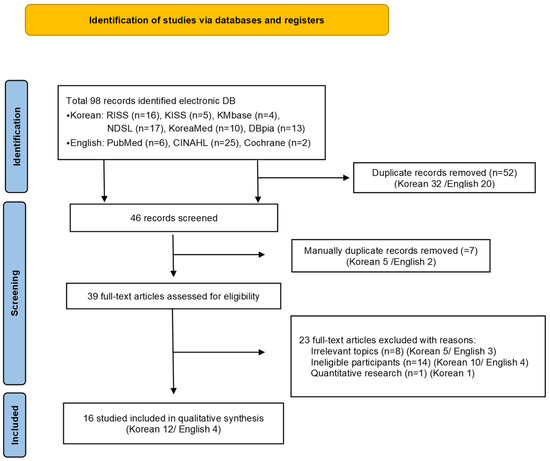
Figure 1
Open AccessArticle
Changes in Mental Health among Japanese University Students during the COVID-19 Era: Differences by College Department, Graduate Level, Sex, and Academic Year
by
Emma Underwood, Ryo Horita, Nanako Imamura, Taku Fukao, Miho Adachi, Satoko Tajirika, Ricardo Izurieta and Mayumi Yamamoto
Healthcare 2024, 12(9), 902; https://doi.org/10.3390/healthcare12090902 (registering DOI) - 26 Apr 2024
Abstract
This study compared the effects of academic year, college department, and undergraduate or graduate status on Japanese students’ mental health during the COVID-19 pandemic. From 2021–2023, an online survey was conducted using the Counseling Center Assessment of Psychological Systems-Japanese (CCAPS-Japanese) to evaluate students’
[...] Read more.
This study compared the effects of academic year, college department, and undergraduate or graduate status on Japanese students’ mental health during the COVID-19 pandemic. From 2021–2023, an online survey was conducted using the Counseling Center Assessment of Psychological Systems-Japanese (CCAPS-Japanese) to evaluate students’ mental health; 9395 undergraduate students (4623 female, 4772 male) and 1169 graduate students (380 female, 789 male) responded. Undergraduate students in medicine had lower levels of depression, generalized anxiety, and social anxiety than those in other departments. Engineering students exhibited the highest level of academic distress. First-year students had the highest levels of generalized and social anxiety but the lowest level of academic distress. Second-year students had the lowest level of depression, and third-year students had the highest level of academic distress. Among graduate students, first-year students had higher levels of depression, generalized anxiety, social anxiety, academic distress, and hostility than second-year students. Undergraduates had poorer mental health than graduate students. Females had higher levels of eating concerns than males among undergraduate students. This study revealed that the mental health of university students was affected by various factors. These findings demonstrate the characteristics of university students requiring early support.
Full article
Open AccessEditorial
Updating Exercise Testing Strategies and Exercise Prescription Protocols
by
Rafael Oliveira and João Paulo Brito
Healthcare 2024, 12(9), 901; https://doi.org/10.3390/healthcare12090901 (registering DOI) - 26 Apr 2024
Abstract
Exercise testing and prescription is still a hot topic [...]
Full article
(This article belongs to the Special Issue Exercise Testing and Prescription Strategies to Improve Quality of Life)
Open AccessArticle
Group Intervention Program to Facilitate Post-Traumatic Growth and Reduce Stigma in HIV
by
Nuno Tomaz Santos, Catarina Ramos, Margarida Ferreira de Almeida and Isabel Leal
Healthcare 2024, 12(9), 900; https://doi.org/10.3390/healthcare12090900 (registering DOI) - 26 Apr 2024
Abstract
Background: Research on post-traumatic growth (PTG) and HIV is scarce and the relationship between PTG and stigma is controversial. Group psychotherapeutic interventions to facilitate PTG in clinical samples are effective but none exist to simultaneously decrease stigma in the HIV population. The main
[...] Read more.
Background: Research on post-traumatic growth (PTG) and HIV is scarce and the relationship between PTG and stigma is controversial. Group psychotherapeutic interventions to facilitate PTG in clinical samples are effective but none exist to simultaneously decrease stigma in the HIV population. The main objective was to evaluate the effectiveness of an intervention in increasing PTG and decreasing stigma in HIV, as well as to explore relationships between the variables. Methods: Quasi-experimental design with a sample of 42 HIV-positive adults (M = 46.26, SD = 11.90). The experimental group (EG) was subjected to a 9-week group intervention. Instruments: CBI, PTGI-X, PSS-10, HIV stigma, emotional expression, HIV stress indicators, HIV literacy, and skills. Multiple linear regression analysis was performed to assess the relationship between the variables. Results: There was an increase in PTG and a significant decrease in stigma in all domains and subscales in the EG. Compared to the control group, stigma (t(42) = −3.040, p = 0.004) and negative self-image (W = −2.937, p = 0.003) were significant, showing the efficacy of the intervention. Discussion: The intervention demonstrated success in facilitating PTG, attesting that in order to increase PTG, personal strength, and spiritual change, it is necessary to reduce stigma and negative self-image. The research provides more information on group interventions for PTG in HIV, relationships between variables, and population-specific knowledge for professionals.
Full article
(This article belongs to the Special Issue The Effects of Loneliness, Stigma, and Social Support on the Health and Mental Health of Older Populations)
►▼
Show Figures

Figure 1
Open AccessArticle
Person-Centred Diabetes Care: Examining Patient Empowerment and Diabetes-Specific Quality of Life in Slovenian Adults with Type 2 Diabetes
by
Tina Virtič Potočnik, Nina Ružić Gorenjec, Matic Mihevc, Črt Zavrnik, Majda Mori Lukančič, Antonija Poplas Susič and Zalika Klemenc-Ketiš
Healthcare 2024, 12(9), 899; https://doi.org/10.3390/healthcare12090899 - 26 Apr 2024
Abstract
►▼
Show Figures
Patient empowerment is crucial for promoting and strengthening health. We aimed to assess patient empowerment and diabetes-specific health-related quality of life (HRQoL) in adults with type 2 diabetes (T2D). A multi-centre, cross-sectional survey was conducted among adults with T2D in urban and rural
[...] Read more.
Patient empowerment is crucial for promoting and strengthening health. We aimed to assess patient empowerment and diabetes-specific health-related quality of life (HRQoL) in adults with type 2 diabetes (T2D). A multi-centre, cross-sectional survey was conducted among adults with T2D in urban and rural primary care settings in Slovenia between April and September 2023. The survey utilised convenience sampling and included sociodemographic and clinical data, the Diabetes Empowerment Scale (DES), and the Audit of Diabetes-Dependent QoL (ADDQoL). The study included 289 people with T2D and a mean age of 67.2 years (SD 9.2). The mean overall DES score was 3.9/5 (SD 0.4). In a multivariable linear regression model, higher empowerment was significantly associated with residing in a rural region (p = 0.034), higher education (p = 0.028), and a lack of comorbid AH (p = 0.016). The median overall ADDQoL score was −1.2 (IQR [−2.5, −0.6]). The greatest negative influence of diabetes on HRQoL was observed in the domain ‘Freedom to eat’, followed by ‘Freedom to drink’, ‘Leisure activities’, and ‘Holidays’. Despite high empowerment among adults with T2D, the condition still imposes a personal burden. Integrated primary care models should prioritise the importance of implementing targeted interventions to enhance diabetes empowerment, address comorbidities, and improve specific aspects of QoL among individuals with T2D.
Full article
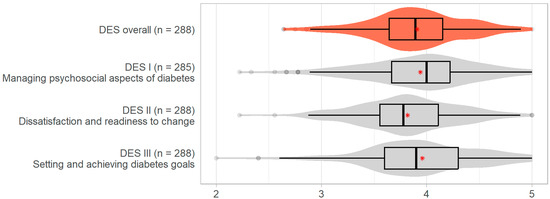
Figure 1
Open AccessSystematic Review
Oral Health Education in Patients with Diabetes: A Systematic Review
by
Pinelopi Petropoulou, Ioannis Kalemikerakis, Eleni Dokoutsidou, Eleni Evangelou, Theocharis Konstantinidis and Ourania Govina
Healthcare 2024, 12(9), 898; https://doi.org/10.3390/healthcare12090898 - 26 Apr 2024
Abstract
Diabetes is known as a “silent epidemic” and is a public health problem that accounts for 9% of all deaths worldwide. The prevention of diabetes is a significant challenge, as its prevalence and incidence are both increasing rapidly. According to the World Health
[...] Read more.
Diabetes is known as a “silent epidemic” and is a public health problem that accounts for 9% of all deaths worldwide. The prevention of diabetes is a significant challenge, as its prevalence and incidence are both increasing rapidly. According to the World Health Organization (WHO), education is the cornerstone of diabetes treatment. Since the severity of oral diseases is significantly higher in diabetic patients, this systematic review aims to highlight the oral care of diabetic patients as a priority for glycemic control and the importance of education for diabetic patients’ oral health. We evaluated 20 clinical studies and 15 meta-analyses from PubMed and Google Scholar over the last five years. Their main themes are the direct relationship between diabetes and oral health, especially periodontitis, and the necessity of education and behaviors that can lead to a better quality of life. Our analysis indicated that good oral health is a critical factor of glycemic control in diabetic patients and can be enhanced by targeted educational programs, backed by long-term medical and dental follow-up. Healthcare personnel should be encouraged to develop their knowledge of oral health in relation to the disease so that behaviors can be adopted to improve patients’ quality of life. Telemedicine could also contribute to patient education and self-management of the disease.
Full article
(This article belongs to the Special Issue Nursing Care for Patients with Diabetes)
►▼
Show Figures
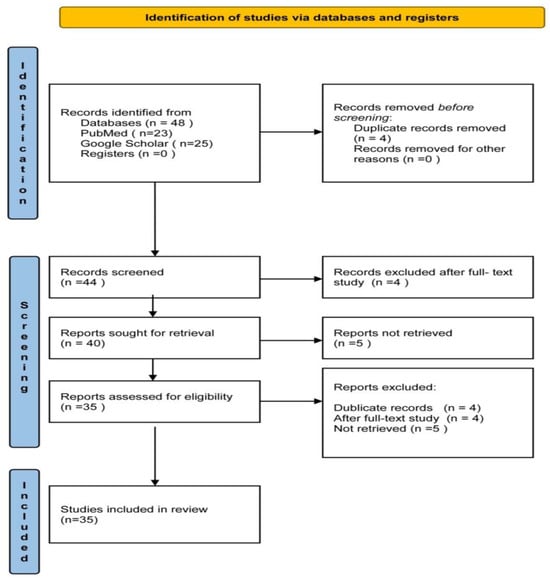
Figure 1
Open AccessArticle
Online Health Information-Seeking Behaviour among People of African Descent in the United Kingdom: A Qualitative Study
by
Jesse Enebi Usman, Charmaine Childs, David Rogerson and Markos Klonizakis
Healthcare 2024, 12(9), 897; https://doi.org/10.3390/healthcare12090897 - 26 Apr 2024
Abstract
Effective public health interventions rely on understanding how individuals access, interpret, and utilise health information. Studying the health information-seeking behaviour (HISB) of a community can provide valuable insights to inform strategies that address community health needs and challenges. This study explored the online
[...] Read more.
Effective public health interventions rely on understanding how individuals access, interpret, and utilise health information. Studying the health information-seeking behaviour (HISB) of a community can provide valuable insights to inform strategies that address community health needs and challenges. This study explored the online HISBs of People of African Descent (PoAD) in the United Kingdom (UK), a demographic that comprises four percent of the UK population and has a 92.8% active Internet usage rate. Data on the HISB were collected from 21 PoAD across various UK regions through online semi-structured interviews before being analysed using reflexive Thematic Analysis (TA). The participants ranged in age from 20 to 70 years and had a mean age of 42.8 (SD ± 11.4). Our analysis of the interview transcripts revealed five key themes: Internet usage and preferences, attitudes toward social media, barriers to seeking health information online, trust in online health information, and cultural influences on online HISB. Our findings indicate a proactive engagement among PoAD in seeking health information online that is underscored by a preference for professional sources over ethnic congruence. However, concerns about misinformation exist, and there are barriers to accessing health information online, including data privacy, unreliable information, and information relevance and overload. We also found that cultural factors and traditional beliefs impact the adoption of Internet-based interventions among PoAD, highlighting the need for culturally sensitive approaches. Preferences regarding the frequency and delivery of online health information varied among participants, with a majority preferring a weekly update. This study emphasises the critical need for accessible, culturally appropriate, secure, and reliable online health resources tailored to the needs and preferences of the PoAD.
Full article
(This article belongs to the Special Issue Digital Health for Equity)
►▼
Show Figures
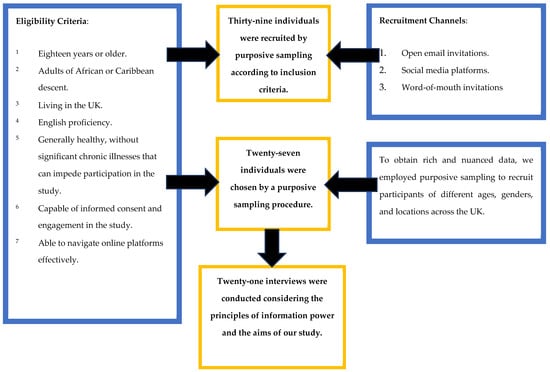
Figure 1
Open AccessSystematic Review
Occupational Therapy Interventions to Improve the Quality of Life of Older Adults with Dementia Living in Nursing Homes: A Systematic Review
by
Cristian Uceda-Portillo, Sandra Aranda-Valero and Pedro Moruno-Miralles
Healthcare 2024, 12(9), 896; https://doi.org/10.3390/healthcare12090896 - 25 Apr 2024
Abstract
The increase in older adults with dementia presents challenges in promoting research to improve the quality of life of this population. The objective of this study was to assess the scientific evidence on the effectiveness of occupational therapy interventions in improving the quality
[...] Read more.
The increase in older adults with dementia presents challenges in promoting research to improve the quality of life of this population. The objective of this study was to assess the scientific evidence on the effectiveness of occupational therapy interventions in improving the quality of life of older adults over 65 years old with dementia living in nursing homes. The databases used were PubMed, Web of Science, OTSeeker, clinicaltrials.gov, Dialnet, Scopus, Cochrane, and SciELO between 2013 and 2023. The studies were selected and evaluated according to the Cochrane guidelines. The review was carried out following the PRISMA 2020 Statement. Sixteen articles met the inclusion criteria and were categorized into four groups according to the focus of the intervention: “meaningful activities/occupations”, “physical, cognitive and sensory functioning”, “performance areas”, and “physical and social environment and staff training”. The strength of evidence was moderate, and the risk of bias was low. The findings revealed that occupational therapy interventions based on participation in recreational activities, reminiscence, performance-based activities and the physical and social environment, and specialized staff training, could improve the perceived quality of life of older adults with dementia living in nursing homes.
Full article
(This article belongs to the Special Issue Aging and Quality of Life)
Open AccessSystematic Review
Gait Compensation among Children with Non-Operative Legg–Calvé–Perthes Disease: A Systematic Review
by
Abdulrhman Mashabi, Rula Abdallat, Mohammed S. Alghamdi and Mohammad Al-Amri
Healthcare 2024, 12(9), 895; https://doi.org/10.3390/healthcare12090895 - 25 Apr 2024
Abstract
Perthes disease is a condition that affects walking patterns in young children due to poor blood circulation in the hip joint. Understanding the gait strategies of affected children is of great importance for an objective assessment and better management of this condition. The
[...] Read more.
Perthes disease is a condition that affects walking patterns in young children due to poor blood circulation in the hip joint. Understanding the gait strategies of affected children is of great importance for an objective assessment and better management of this condition. The aim of this systematic review was to evaluate the current literature to identify gait compensation patterns in non-operative children with Perthes disease. Methods: A systematic electronic search was performed using MEDLINE, CINAHL, Embase, BIOSIS, and the Cochrane Library to identify studies published from inception up until December 2023. An adapted Downs and Black checklist was utilised to assess methodological quality and project risk of bias. Percentage agreement and nominal kappa statistics with bootstrapped bias-corrected 95% confidence intervals (CIs) were used. Result: A comprehensive literature search revealed 277 citations for review, of which 210 studies entered full-text screening. In total, eight studies met the inclusion criteria for quality assessment by two independent reviewers. The results revealed variations in data quality, with scores ranging from 12 to 17 due to missing information related to subject characteristics, biomechanical model, and power calculation. Conclusions: This review reveals common compensation strategies associated with walking among non-operative children with Perthes disease such as Trendelenburg gait due to weakness of the hip abductor muscle.
Full article
(This article belongs to the Section Chronic Care)
Open AccessReview
Infection after Anterior Cruciate Ligament Reconstruction: A Narrative Review of the Literature
by
Giuseppe Danilo Cassano, Lorenzo Moretti, Giovanni Vicenti, Claudio Buono, Federica Albano, Teresa Ladogana, Igor Rausa, Angela Notarnicola and Giuseppe Solarino
Healthcare 2024, 12(9), 894; https://doi.org/10.3390/healthcare12090894 - 25 Apr 2024
Abstract
Infection is an uncommon side effect of arthroscopic surgery, and this percentage is higher in anterior cruciate ligament reconstruction (ACLR) surgery, where graft and fixation devices are used. Infections can not only lead to high re-admission rates and poor functional recovery of the
[...] Read more.
Infection is an uncommon side effect of arthroscopic surgery, and this percentage is higher in anterior cruciate ligament reconstruction (ACLR) surgery, where graft and fixation devices are used. Infections can not only lead to high re-admission rates and poor functional recovery of the knee but can also have a significant negative impact on the patient’s psychological and economic health, especially in athletes, as it can affect their sports career. It is important to be aware of the many risk factors, especially the manifestation of symptoms. These may sometimes be non-specific to the infectious pathology and common to other situations, such as the presence of a significant intra-articular hematoma. Septic arthritis after ACLR can occur at any time after surgery but typically presents acutely, while late manifestation is relatively rare. Diagnosis of infection is based on patient history, physical examination, laboratory parameters, and analysis of synovial fluid after joint aspiration, which is the gold standard for diagnosing post-operative infection. Once symptoms appear and the diagnosis seems certain, it is necessary to intervene quickly with arthroscopic debridement and long-term antibiotic treatment to try to save the graft and resolve the infectious situation to avoid graft failure and arthrofibrotic sequelae. The aim of this paper is to provide an overview of the epidemiology, pathogenesis, risk factors, clinical presentation, diagnostic evaluation, and current treatment guidelines of septic arthritis after ACLR surgery by analyzing recent literature, in particular meta-analyses and systematic reviews.
Full article
(This article belongs to the Special Issue Orthopedic Implant-Associated Infections: Unlocking the Secrets of Prevention and Treatment)
Open AccessArticle
Effects of Hypopressive Abdominal Training on Ventilatory Capacity and Quality of Life: A Randomized Controlled Trial
by
Maria del Carmen Herena-Funes, Caroline Correia de Alencar, Dara María Velázquez-Torres, Elisenda Marrero García, Yolanda Castellote-Caballero, Felipe León-Morillas, Aday Infante-Guedes and David Cruz-Díaz
Healthcare 2024, 12(9), 893; https://doi.org/10.3390/healthcare12090893 - 25 Apr 2024
Abstract
Pelvic floor dysfunctions, associated with alterations in respiratory mechanics and, consequently, quality of life, are the cause of the most frequent gynecological problems. Pelvic floor muscle training emerges as a first-line treatment, with new approaches such as hypopressive exercises. The aim of this
[...] Read more.
Pelvic floor dysfunctions, associated with alterations in respiratory mechanics and, consequently, quality of life, are the cause of the most frequent gynecological problems. Pelvic floor muscle training emerges as a first-line treatment, with new approaches such as hypopressive exercises. The aim of this study was to analyze the efficacy of an 8-week supervised training program of hypopressive exercises on the pelvic floor and its impact on improving the ventilatory mechanics and quality of life in women. Analysis of the spirometric parameters showed a significant main Group × Time effect for three parameters: the ratio of FEV1/FVC (p = 0.030), the forced expiratory flow at 75% of the expired vital capacity (p < 0.001), and the forced expiratory flow over the middle half of the forced vital capacity (p = 0.005). No statistical significance was found regarding the SF-12 questionnaire components; only differences were found over time in the physical role (p = 0.023), bodily pain (p = 0.001), and vitality (p < 0.010) domains and in the physical component summary score (p = 0.010). After an 8-week intervention of hypopressive exercises, an improvement in the ventilatory and pulmonary capacities can be observed.
Full article
(This article belongs to the Special Issue Advances in Physical Therapy: Rehabilitation, Therapeutic Exercise and Promotion of Quality of Life)
Open AccessSystematic Review
Detection of Arrhythmias Using Smartwatches—A Systematic Literature Review
by
Bence Bogár, Dániel Pető, Dávid Sipos, Gábor Füredi, Antónia Keszthelyi, József Betlehem and Attila András Pandur
Healthcare 2024, 12(9), 892; https://doi.org/10.3390/healthcare12090892 - 25 Apr 2024
Abstract
Smartwatches represent one of the most widely adopted technological innovations among wearable devices. Their evolution has equipped them with an increasing array of features, including the capability to record an electrocardiogram. This functionality allows users to detect potential arrhythmias, enabling prompt intervention or
[...] Read more.
Smartwatches represent one of the most widely adopted technological innovations among wearable devices. Their evolution has equipped them with an increasing array of features, including the capability to record an electrocardiogram. This functionality allows users to detect potential arrhythmias, enabling prompt intervention or monitoring of existing arrhythmias, such as atrial fibrillation. In our research, we aimed to compile case reports, case series, and cohort studies from the Web of Science, PubMed, Scopus, and Embase databases published until 1 August 2023. The search employed keywords such as “Smart Watch”, “Apple Watch”, “Samsung Gear”, “Samsung Galaxy Watch”, “Google Pixel Watch”, “Fitbit”, “Huawei Watch”, “Withings”, “Garmin”, “Atrial Fibrillation”, “Supraventricular Tachycardia”, “Cardiac Arrhythmia”, “Ventricular Tachycardia”, “Atrioventricular Nodal Reentrant Tachycardia”, “Atrioventricular Reentrant Tachycardia”, “Heart Block”, “Atrial Flutter”, “Ectopic Atrial Tachycardia”, and “Bradyarrhythmia.” We obtained a total of 758 results, from which we selected 57 articles, including 33 case reports and case series, as well as 24 cohort studies. Most of the scientific works focused on atrial fibrillation, which is often detected using Apple Watches. Nevertheless, we also included articles investigating arrhythmias with the potential for circulatory collapse without immediate intervention. This systematic literature review provides a comprehensive overview of the current state of research on arrhythmia detection using smartwatches. Through further research, it may be possible to develop a care protocol that integrates arrhythmias recorded by smartwatches, allowing for timely access to appropriate medical care for patients. Additionally, continuous monitoring of existing arrhythmias using smartwatches could facilitate the assessment of the effectiveness of prescribed therapies.
Full article
(This article belongs to the Special Issue Healthcare Goes Digital: Mobile Health and Electronic Health Technology in the 21st Century)
►▼
Show Figures

Figure 1
Open AccessArticle
Periodontal Health among Individuals with Intellectual Disabilities Living in a Saudi Institutional Rehabilitation Centre
by
Abdullah Ali H. Alzahrani
Healthcare 2024, 12(9), 891; https://doi.org/10.3390/healthcare12090891 - 25 Apr 2024
Abstract
The aim of this study was to explore periodontal health among intellectually disabled individuals living in an institutional rehabilitation centre in the Al-Baha Region of Saudi Arabia. A cross-sectional study was conducted from November 2023 to January 2024. Clinical oral examinations were carried
[...] Read more.
The aim of this study was to explore periodontal health among intellectually disabled individuals living in an institutional rehabilitation centre in the Al-Baha Region of Saudi Arabia. A cross-sectional study was conducted from November 2023 to January 2024. Clinical oral examinations were carried out using the World Health Organization criteria for bleeding sites and the presence of periodontal pockets. Simplified oral hygiene and community periodontal indices were employed to evaluate participants’ oral health. A total of 89 participants, comprising both males and females with intellectual disabilities, were included in this study. Gender, severity of intellectual disability, type of additional physical disability, tooth brushing habits and oral hygiene status were significantly associated with the presence of periodontal disease. Additionally, poor oral hygiene, not brushing teeth and periodontal pockets of 4–5 mm and 6 mm or more were significantly more prevalent among individuals with severe and moderate intellectual disabilities (p = 0.001, p = 0.001, p = 0.001 and p = 0.001, respectively). The prevalence of periodontal disease among the studied population was 54%. The odds of having periodontal disease were significantly higher in the severe intellectual disability group compared to the mild intellectual disability group (OR = 2.328, 95% CI = 1.430–3.631, p = 0.03). It was also found that intellectually disabled participants with additional physical disabilities suffered more from periodontal disease than those without additional physical disabilities (OR = 0.971, 95% CI = 0.235–4.023, p = 0.025). Overall, individuals with intellectual disabilities had a significant demand for periodontal care. This study highlighted the need for more organised preventive programmes for individuals with intellectual disabilities. Dentists should be vigilant about improving periodontal health, focus on preventive programmes and provide comprehensive dental care with an emphasis on periodic recall and monitoring.
Full article
Open AccessArticle
Successful Aging of Korean Older Adults Engaging in Sports Regularly: Health Beliefs, Exercise Adherence Intention, and Health Promotion Behavior
by
Song-Eun Kim, Jun-Su Bae, Eun-Chul Seo, Wi-Young So and Young-Kyun Sim
Healthcare 2024, 12(9), 890; https://doi.org/10.3390/healthcare12090890 - 25 Apr 2024
Abstract
The population of older adults is increasing more rapidly in Korea than in any other country, making successful aging a salient need in Korean society. For successful aging, older adults must engage in sports activities regularly. This study determined the relationships among health
[...] Read more.
The population of older adults is increasing more rapidly in Korea than in any other country, making successful aging a salient need in Korean society. For successful aging, older adults must engage in sports activities regularly. This study determined the relationships among health beliefs, exercise adherence intention, health promotion behavior, and successful aging among older adults who engage in sports activities regularly. The participants were 287 adults aged 65 years or older who live in Korea and exercise regularly. Data were collected through a survey and analyzed using descriptive statistics, correlation analysis, and structural equation modeling. The integrated model lacked explanatory power in terms of goodness of fit, but the alternative model had sufficient explanatory power. The alternative model showed that health beliefs, exercise adherence intention, and health promotion behavior are significantly related and that health promotion behavior positively predicts successful aging. It also showed that health beliefs affect successful aging through the mediation of exercise adherence intention and health promotion behavior. This study is meaningful because it verifies the structural and theoretical relationships among health beliefs, exercise adherence intention, health promotion behavior, and successful aging. As a result, it provides information that can improve the welfare of older adults in Korean society.
Full article
(This article belongs to the Special Issue Physical Activity and Sedentary Behavior among Older Adults)
►▼
Show Figures
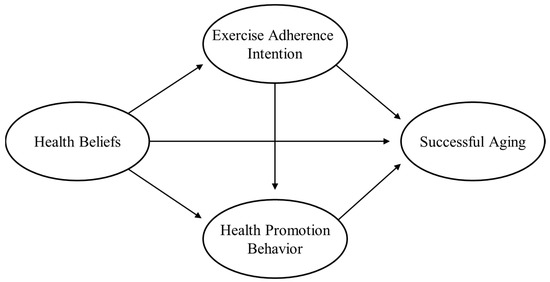
Figure 1
Open AccessArticle
Overcoming Barriers in Hospital-Based Health Technology Assessment (HB-HTA): International Expert Panel Consensus
by
Iga Lipska, Rossella Di Bidino, Maciej Niewada, Bertalan Nemeth, Tomasz Bochenek, Monika Kukla, Barbara Więckowska, Alicja Sobczak, Katarzyna Iłowiecka, Antal Zemplenyi, Nicolas Martelli, Tess Martin, Olena Filiniuk, Kostyantyn Kosyachenko, Rabia Sucu, Oresta Piniazhko, Olha Zaliska, Andrey Avdeyev, Nasrulla Shanazarov, Marina von Pinoci and Rok Hrenadd
Show full author list
remove
Hide full author list
Healthcare 2024, 12(9), 889; https://doi.org/10.3390/healthcare12090889 - 25 Apr 2024
Abstract
The purpose of this article is to investigate the common facilitators and barriers associated with the implementation of hospital-based health technology assessment (HB-HTA) across diverse hospital settings in seven countries. Through a two-round Delphi study, insights were gathered from a panel of 15
[...] Read more.
The purpose of this article is to investigate the common facilitators and barriers associated with the implementation of hospital-based health technology assessment (HB-HTA) across diverse hospital settings in seven countries. Through a two-round Delphi study, insights were gathered from a panel of 15 HTA specialists from France, Hungary, Italy, Kazakhstan, Poland, Switzerland, and Ukraine. Experts initially conducted a comprehensive review of the HB-HTA implementation in their respective countries, identifying the barriers and facilitators through descriptive analysis. Subsequently, panel experts ranked these identified barriers and facilitators on a seven-point Likert scale. A median agreement score ≥ 6 and interquartile range (IQR) ≤ 1 was accepted as reaching a consensus. Out of the 12 statements categorized as external and internal barriers and facilitators, the expert panel reached consensus on six statements (two barriers and four facilitators). The external barrier, which achieved consensus, was the lack of the formal recognition of the role of HB-HTA in national or regional legislations. The internal barrier reaching consensus was the limited availability of human resources dedicated to HB-HTA. This qualitative study indicates that HB-HTA still has progress to make before being formally accepted and integrated across most countries, although by building on the facilitating factors we identified there may be an opportunity for the implementation of internationally developed strategies to strengthen HB-HTA practices.
Full article
(This article belongs to the Topic Economics of Public Health: Assessment of Health Interventions)
Open AccessArticle
Croatian Translation and Validation of the Patient Satisfaction with Nursing Care Quality Questionnaire (PSNCQQ)
by
Marin Mamić, Hrvoje Vidić, Tihomir Jovanović, Slavka Galić, Ivana Jelinčić, Štefica Mikšić, Božica Lovrić, Ivanka Zirdum, Kristijan Matković, Goran Zukanović, Goranka Radmilović, Zrinka Puharić, Mirela Frančina, Robert Lovrić and Ivan Vukoja
Healthcare 2024, 12(9), 888; https://doi.org/10.3390/healthcare12090888 - 25 Apr 2024
Abstract
Patient satisfaction is a crucial measure of the quality of healthcare, especially with regard to nursing services in hospital settings. Understanding and increasing patient satisfaction with nursing care is critical to improving overall healthcare and ensuring positive patient experiences during their hospital stay.
[...] Read more.
Patient satisfaction is a crucial measure of the quality of healthcare, especially with regard to nursing services in hospital settings. Understanding and increasing patient satisfaction with nursing care is critical to improving overall healthcare and ensuring positive patient experiences during their hospital stay. The aim of this research was to evaluate the psychometric properties of the Croatian version of the Satisfaction with Nursing Care Quality Questionnaire (PSNCQQ), test the reliability and validity of the tool after translation, and investigate differences in patient satisfaction based on demographic variables, as well as their contribution to satisfaction with the quality of nursing care. After translation and adaptation, the Croatian version of the PSNCQQ was applied to 350 hospitalized patients (average age 51.19 years (range: 18–87)), of whom 194 (55.4%) were men and 156 (44.6%) were women. The results showed high internal consistency (Cronbach’s α = 0.977) and confirmed the one-factor structure of the questionnaire, explaining 70.64% of the total variance. Confirmatory factor analysis supported the unidimensional model, showing strong fit indices (χ2 = 583.047, df = 149, p < 0.001, GFI = 0.861, AGFI = 0.818, NFI = 0.936, TLI = 0.946, CFI = 0.955, RMSEA = 0.080, PCLOSE < 0.001). In conclusion, the validation of the PSNCQQ in the Croatian language increases resources for evaluating and improving the quality of nursing care. This research lays the foundation for future studies and practical applications aimed at improving patient satisfaction and nursing care outcomes in Croatia, but there are also limitations to this study, including its one-institution scope, the possible influence of factors outside the current treatment on satisfaction, and the lack of comparison with objective clinical indicators.
Full article
(This article belongs to the Special Issue Advances in Nursing Research)
►▼
Show Figures
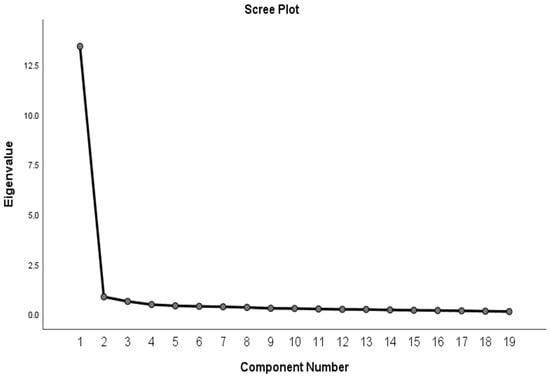
Figure 1

Journal Menu
► ▼ Journal Menu-
- Healthcare Home
- Aims & Scope
- Editorial Board
- Reviewer Board
- Topical Advisory Panel
- Instructions for Authors
- Special Issues
- Topics
- Sections & Collections
- Article Processing Charge
- Indexing & Archiving
- Editor’s Choice Articles
- Most Cited & Viewed
- Journal Statistics
- Journal History
- Journal Awards
- Society Collaborations
- Conferences
- Editorial Office
Journal Browser
► ▼ Journal BrowserHighly Accessed Articles
Latest Books
E-Mail Alert
News
Topics
Topic in
Architecture, Buildings, Infrastructures, Land, Smart Cities, Healthcare, Systems
SDGs 2030 in Buildings and Infrastructure
Topic Editors: Tao Wang, Hanliang Fu, Zezhou WuDeadline: 31 May 2024
Topic in
Behavioral Sciences, Children, Healthcare, IJERPH, Nutrients
Economics of Public Health: Assessment of Health Interventions
Topic Editors: Ce Shang, Amanda J. Quisenberry, Yingning WangDeadline: 30 June 2024
Topic in
Societies, Sports, Healthcare
Sport and Society
Topic Editors: José Carmelo Adsuar, Mitchell Alberto Alarcón Diaz, Jorge Carlos-Vivas, Roxana Paola Palacios Cartagena, Carmen Galán Arroyo, Ana Fondón-LudeñaDeadline: 31 July 2024
Topic in
Healthcare, IJERPH, JCM, Nutrients, Pharmacy
The Promotion and Development of Community Health for Personal Health: Theories and Applications
Topic Editors: Yang Gao, Lianyong Qi, Chia-Huei Wu, Yu-Hsi Yuan, Datian BiDeadline: 31 August 2024

Conferences
Special Issues
Special Issue in
Healthcare
Outdoor and Nature Therapy
Guest Editor: Jesper DahlgaardDeadline: 1 May 2024
Special Issue in
Healthcare
New Waves of Sexual and Reproductive Health
Guest Editors: Agnieszka Bień, Magdalena Korżyńska-PiętasDeadline: 24 May 2024
Special Issue in
Healthcare
Non-pharmacological Approaches and Their Impact on Noncommunicable Diseases
Guest Editor: Markel Rico-GonzálezDeadline: 3 June 2024
Special Issue in
Healthcare
Nursing Care for Patients with Diabetes
Guest Editor: Eugenia VlachouDeadline: 15 June 2024
Topical Collections
Topical Collection in
Healthcare
E-learning and Digital Training in Healthcare Education: Current Trends and New Challenges
Collection Editors: Luís Proença, José João Mendes, João Botelho, Vanessa Machado
Topical Collection in
Healthcare
Current Nursing Practice and Education
Collection Editor: Florin Oprescu
Topical Collection in
Healthcare
Advances in Integrative Medicine: Complementary Approaches and Therapies in Global Healthcare
Collection Editors: Jorge P. Machado, Maria Begoña Criado








